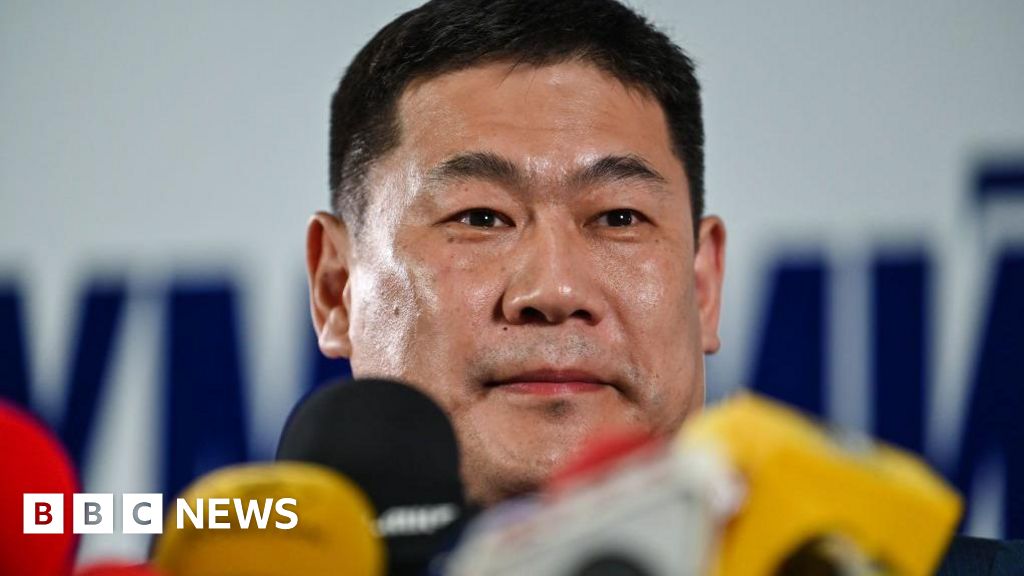ARTICLE AD BOX
Senate Republicans are “starting to coalesce” around a $2 trillion floor for spending cuts in a party-line budget reconciliation package, exceeding the instructions in House Republicans’ budget blueprint for enacting President Trump’s agenda, Sen. Steve Daines told The Washington Times Tuesday.
“I think we’re going to be more aggressive than the House,” said Mr. Daines, Montana Republican. “They were at $1.5 trillion. It looks like we’re coming in closer to $2 trillion, probably where we want to have this land.”
Mr. Daines’ comments came during an interview with The Times in his Capitol Hill office where he discussed his top goal for the package: permanently extending Mr. Trump’s first-term tax cuts that provided relief to small business and individuals and will expire at year’s end absent congressional action.
Setting the spending cut floor at $2 trillion – which he cautioned is “not firm yet until we get it passed” – could be sweetener for fiscal hawks in the House who are wary of the estimated $4.6 trillion cost of making the 2017 tax cuts permanent, he said.
“I think in some way that can help with some of our more fiscally conservative friends in the House,” Mr. Daines said. “It helps with fiscally conservative friends in the Senate.”
Republicans want to settle on a budget in the next few weeks that both chambers can vote on before the two-week congressional recess for Easter and Passover.
The House adopted a budget resolution one month ago that outlined broad parameters for the GOP’s sweeping tax and spending cut plans. The budget instructions require House committees to collectively find at least $1.5 trillion in cuts, but set a goal to hit at least $2 trillion in spending reductions.
Included in the budget blueprint was a $4.5 trillion net cost ceiling to extend the president’s tax cuts, which could rise or fall depending on whether lawmakers hit the more ambitious $2 trillion spending cut goal.
Senate Republicans’ plan is to use an alternative budget baseline that would zero out the $4.6 trillion cost of permanently extending the 2017 tax cuts and then set a ceiling that can accommodate new tax cuts, like the president’s proposals to exempt taxes on tips, overtime and Social Security benefits.
House Budget Committee Chair Jodey Arrington, Texas Republican, opted against including the so-called current policy baseline in the House’s budget instructions because of fiscal hawks’ concerns about the steep impact it could have on the federal deficit.
Mr. Arrington told The Times on Tuesday he is open to making the tax cuts permanent.
“If you offset them with revenue from growth and our budget targets on reducing spending, then I’m open to the idea of making them permanent, but only under those conditions,” he said.
The Senate eying a $2 trillion spending cut floor helps in meeting Mr. Arrington’s conditions and will appease fiscal hawks in the lower chamber who have cautioned their Senate colleagues against lowering their deficit-reduction targets.
However, it does create a potential problem with Republicans in both chambers who fear that the steep target will require cuts to popular government programs like Medicaid.
Sen. Josh Hawley, Missouri Republican, for example, has said he is opposed to the House budget because it requires $880 billion in cuts from the Energy and Commerce Committee that has jurisdiction over Medicaid. He said he did not know how much lower the number needed to be, but that he’s looking for assurances that Medicaid benefits are not on the chopping block.
“I am not going to vote for Medicaid benefit cuts,” Mr. Hawley said. “Work requirements, I’m totally fine with. But 21% of Missourians either get Medicaid or CHIP, so I am not going to vote for benefit cuts for people who I think are qualified.”
Mr. Daines, who sits on the Senate Finance Committee, which has jurisdiction over Medicaid, said panel Republicans had a “very good meeting” with the president earlier this month in which they agreed to look for waste, fraud and abuse in Medicaid – “as long as it’s not touching end benefits.”
“When you dig into it, we think there is some significant savings,” he said.

 4 months ago
95
4 months ago
95








 English (US) ·
English (US) ·